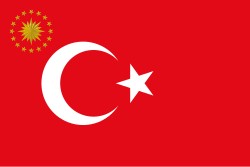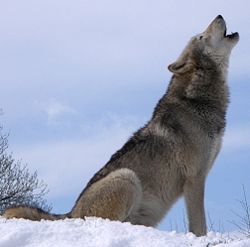History
At the beginning of the Turkish War of Independence, the Ministry of Education organized a lyric competition in 1921 in order to provide the opportunity to win the War of Independence in a national spirit. The Ministry could not find any poem that could be a national anthem among the 724 poems that participated in the competition. For this reason, Mehmet Âkif, who did not participate in the competition because he thought that "the achievements of the nation cannot be praised with money", [3] changed his mind after the invitation letter written to him on February 5, 1921, by the Minister of Education, Hamdullah Suphi, and wrote the poem in which he addressed the Turkish army in his room in the Taceddin Lodge in Ankara. and submitted by proxy. [4] Hamdullah Suphi Bey decided that Âkif's poem should be read first among the soldiers at the front and sent the poem to the Western Front Command. This poem, which was sent, received great appreciation among the soldiers. [5]
The seven poems that passed the pre-selection were discussed in the Assembly session chaired by Mustafa Kemal on March 12, 1921. [3] Mehmet Âkif's poem was read by Hamdullah Suphi Bey at the assembly podium. [6] [7] [8] When the poem was read, the deputies became very excited and it was not considered necessary to read other poems. [3] Despite the objections of some deputies, Mehmet Akif's poem was accepted with enthusiastic applause. [4] Mehmet Âkif donated the five hundred lira award he won to Darülmesai, which was established to end their poverty by teaching poor women and their children to work. [4]
The composition of the poem was delayed for two years due to the ongoing war. On February 12, 1923, the Istanbul Education Directorate was given the task of opening a composition competition. [9] 24 composers participated in the second competition. However, due to the difficult conditions in the country, an evaluation that would determine the result could not be made. For this reason, the lyrics began to be read with different compositions in various parts of the country; Compositions by Ahmet Yekta Bey in Edirne, by İsmail Zühtü Bey in İzmir, by Osman Zeki Üngör in Ankara, by Ali Rıfat Bey and Zati Bey in Istanbul. [5]
The selection committee convened in Ankara in 1924 accepted the composition of Ali Rıfat Çağatay. [10] This composition was played until 1930 and was changed in 1930, and the current composition prepared in 1922 by the then Presidential Symphony Orchestra Conductor Osman Zeki Üngör was put into effect. Edgar Manas made the harmonization of the anthem, which consists of a total of nine quatrains and a fifth, and İhsan Servet Künçer arranged the band.
In 2013, various technical arrangements were made in order to eliminate the difficulty of reading the composition of the anthem. [11] As a result of these regulations, two versions emerged. The first version is prepared for the singing of young people and collective groups, while the second version is used at national and international official high-level ceremonial events. [12]








